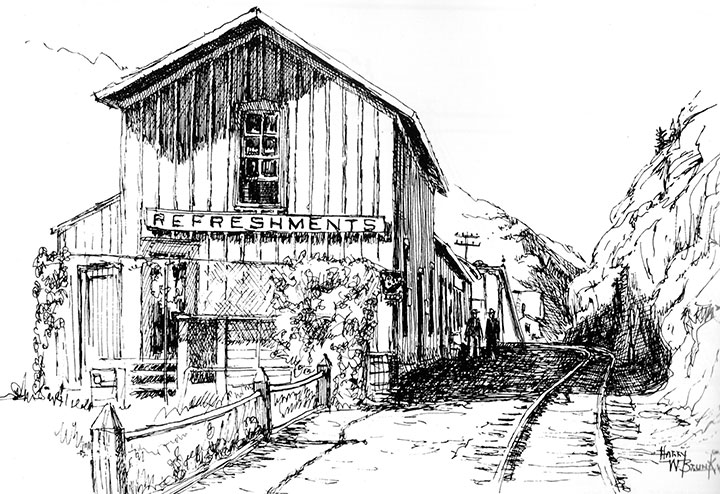One of the most interesting railroad structures on the Colorado & Southern was the Forks Creek eating house. Not only was it an unusually long building, but it was built alongside a curved section of track.
This is another project inspired by Harry Brunk’s GAZETTE series, “Up Clear Creek on the Narrow Gauge.” Harry often wrote about the Forks Creek area during the series, and I was interested enough to build the Classic Miniatures kit of the station. I put the finished station on the unfinished Forks Creek wye section of my layout and moved on to other projects.
Much later in the series, he wrote about the New Forks Creek Eating House, and this caught my attention. I really liked the way the buildings were joined to the station and were built in a curve to follow around the curved track. The article was Part 61 in the series and appeared in the March/April 1990 GAZETTE.
I thought it was an unusual building that would be fun to model, but I didn’t think there was enough room for it on the layout, so I again went on to other projects.
I recently started working on the Forks Creek wye area again and kept thinking about the eating house. I wasn’t sure I could squeeze it into the narrow space next to the station at the edge of the layout. I cut pieces of paper the exact size of the space and taped them together to make a full-sized footprint of the available space. I then enlarged Harry’s HO drawings to O Scale to see if the buildings would fit. I was pleasantly surprised to see they would, with a few inches to spare.

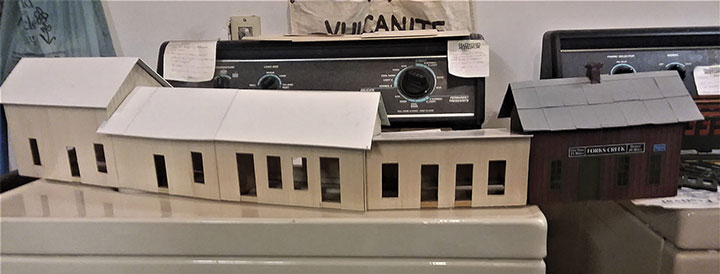
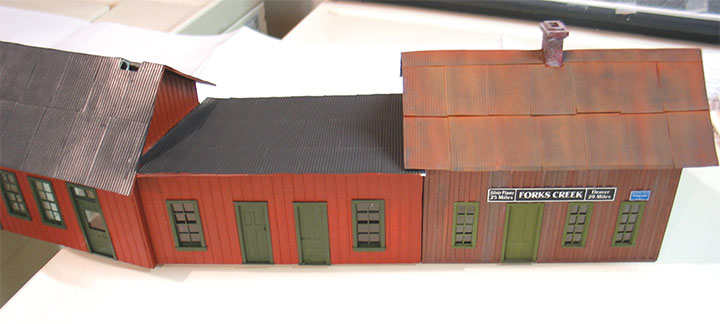

Construction was mostly straightforward except for fitting the sections together to follow the curve of the track. I was again surprised to find that the building fit the curve of my track without modification of the plan. I used NorthEastern Scale board and batten and scribed siding, which was braced in the interior sections, especially where the sections were joined. Doors and windows are Grandt Line (now San Juan Models) castings, which are very close to the plans.


The various roof sections are artist’s illustration board cut to fit the angled sections. At this point I had to decide how I was going to approach applying all that corrugated roofing. The station kit used paper corrugated strips, which looked okay, but I wanted something a little more realistic.
Some years ago, I found a roll of silver metallic strips that were meant to be used like crepe paper for party decorations. The material was very thin plastic, possibly some form of Mylar, grooved perfectly for O Scale corrugated roofing. However, I couldn’t find a glue that would stick to it because it was so slick, so I put it in a drawer and forgot about it.
Lately, I’ve been using a craft glue called Aileen’s Tacky Glue on a few things, so I tried it on the plastic corrugated strips. It held the test strips to the illustration board just fine, so I used it on the entire eating house roof. I painted the test strips with flat black and flat gray spray paint and decided to use flat black. The spray paint didn’t stick to the slick plastic very well, with some paint collecting in the grooves of the corrugated. However, when it dried, a slightly dull silver color showed through the paint on the tops of the corrugated and I liked the effect, so I painted the entire roof that way.
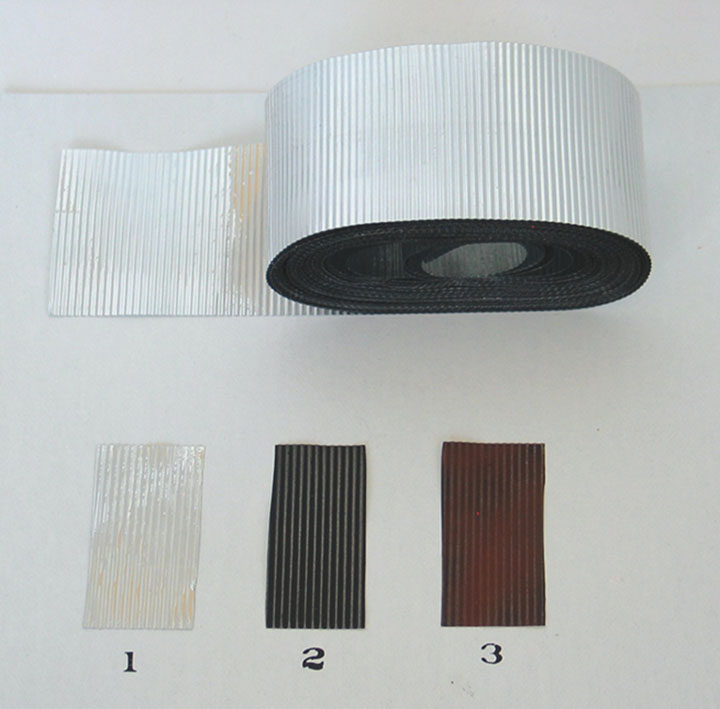
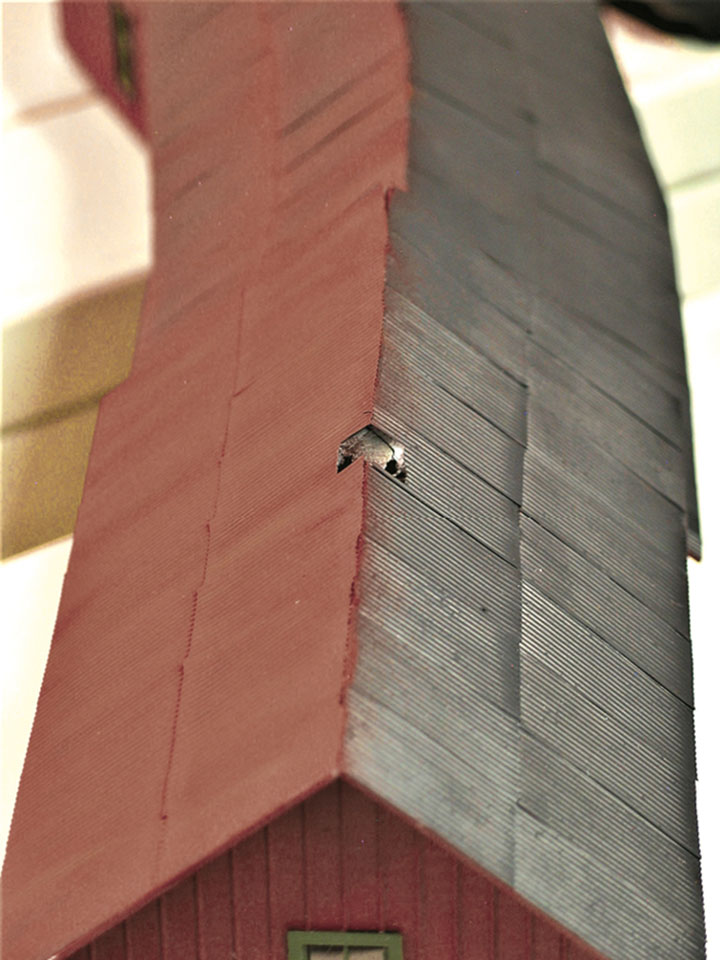
I had purchased a variety of Pan Pastel colors I thought would work for weathering, but hadn’t used them very much. I tried them on a few painted corrugated test strips and liked the results. I wanted the look of a normally weathered roof rather than a decrepit one. I applied the powder with small brushes rather than the soft sponges the manufacturer recommends.
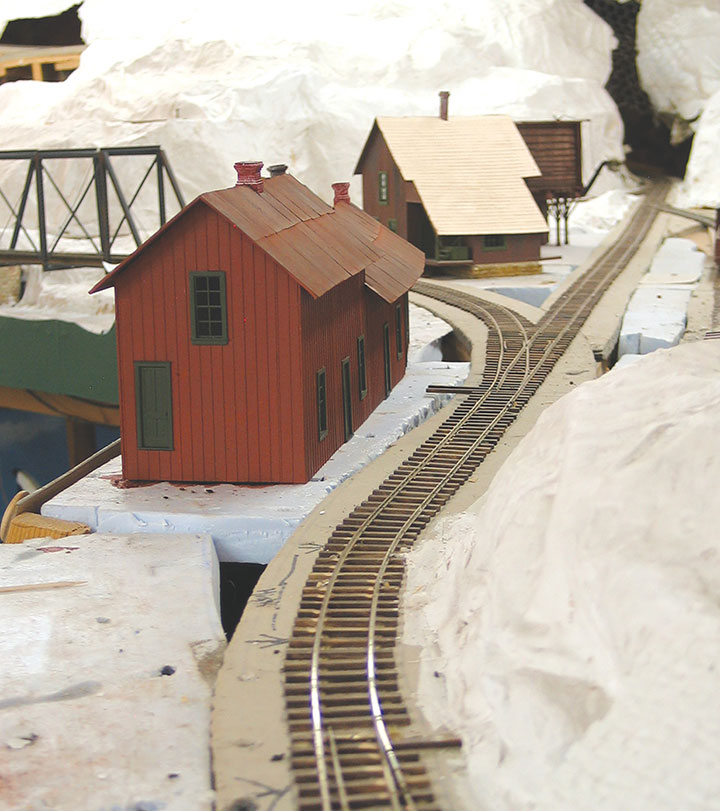
The location of the eating house and station on my layout is certainly not ideal, but finally getting it built should be an incentive to finish scenery in the wye area. More importantly, building the very long, curved structure was challenging, but fun. It also reminded me that, at three actual feet long, just how big O scale buildings can be.
Next time, we’ll take the train from Forks Creek to Georgetown to look at the Alpine Hose #2 firehouse.
